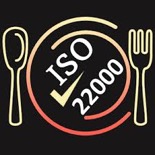 Safe processing is pivotal in ensuring food quality that is fit for human consumption. Food processors and packers are responsible for assuring all systems meet the correct safety standards, as well as taking precautions to assure food products are adequate for consumption before they are distributed to the general market.
Safe processing is pivotal in ensuring food quality that is fit for human consumption. Food processors and packers are responsible for assuring all systems meet the correct safety standards, as well as taking precautions to assure food products are adequate for consumption before they are distributed to the general market.
Some of the important food safety precautions include scrutinising the source and hygiene of raw materials, ensuring all personnel are adequately trained in correct handling techniques, and implementing safety systems that indicate proper equipment methods.

Checklists will document thorough cleaning schedules and responsible personnel. Nevertheless, the quality assurance manager will need to do an inspection to verify that correct processes have been followed in eliminating any microbial chemical contamination. This monitoring of the food processor’s environment is essential and, when done correctly, consistently, and thoroughly, protects not only the processor—from recalls and lawsuits—but the consuming public from potential food poisoning circumstances.
In terms of capacity, this entire process is not only tedious and laborious, but costly and time consuming as well. And for that reason, it needs to be carried out in suitable laboratory facilities and managed by a team of dedicated and trained professional staff, who are capable of conducting testing of surfaces and food products effectively.
The food safety testing industry requires highly efficient and accurate testing systems and supplies. These include specialised (yet user-friendly) rapid tests or devices that aid in specimen collection and transport to the lab for quantitative assays. In order to test a broad range of surfaces, including those difficult to reach tight spaces, or between/beneath equipment, alternative methods and devices may be adopted.

The on-site food safety professionals should be able to easily identify the tools that are to be used for a specific operation, in accordance with the applicable manufacturing and processing systems and the food products being produced. Testing should be carried out both routinely and randomly, and repetitively if required.
Food safety professionals all agree that the most important elements considered in their selection of testing methods is food quality over cost. While cost and versatility were important, sensitivity and specificity cannot be overlooked. If a contamination is discovering it is crucial to identify the causative agent, in order to implement appropriate remedial action.
Equally important is the tracking of origins of the contaminant, and its mode of access into the system. Contaminants may gain entry via the loading dock, walls, drains etc.
Ingredients may be free of micro-organisms such as Listeria, but the bacteria may still be present in the processing system. The food safety professional needs a thorough update on the condition of the plant’s environmental health on a regular basis.

Having the right testing protocol that provides accurate results consistently will ensure a safe, productive operation and prevent a detrimental recall.

